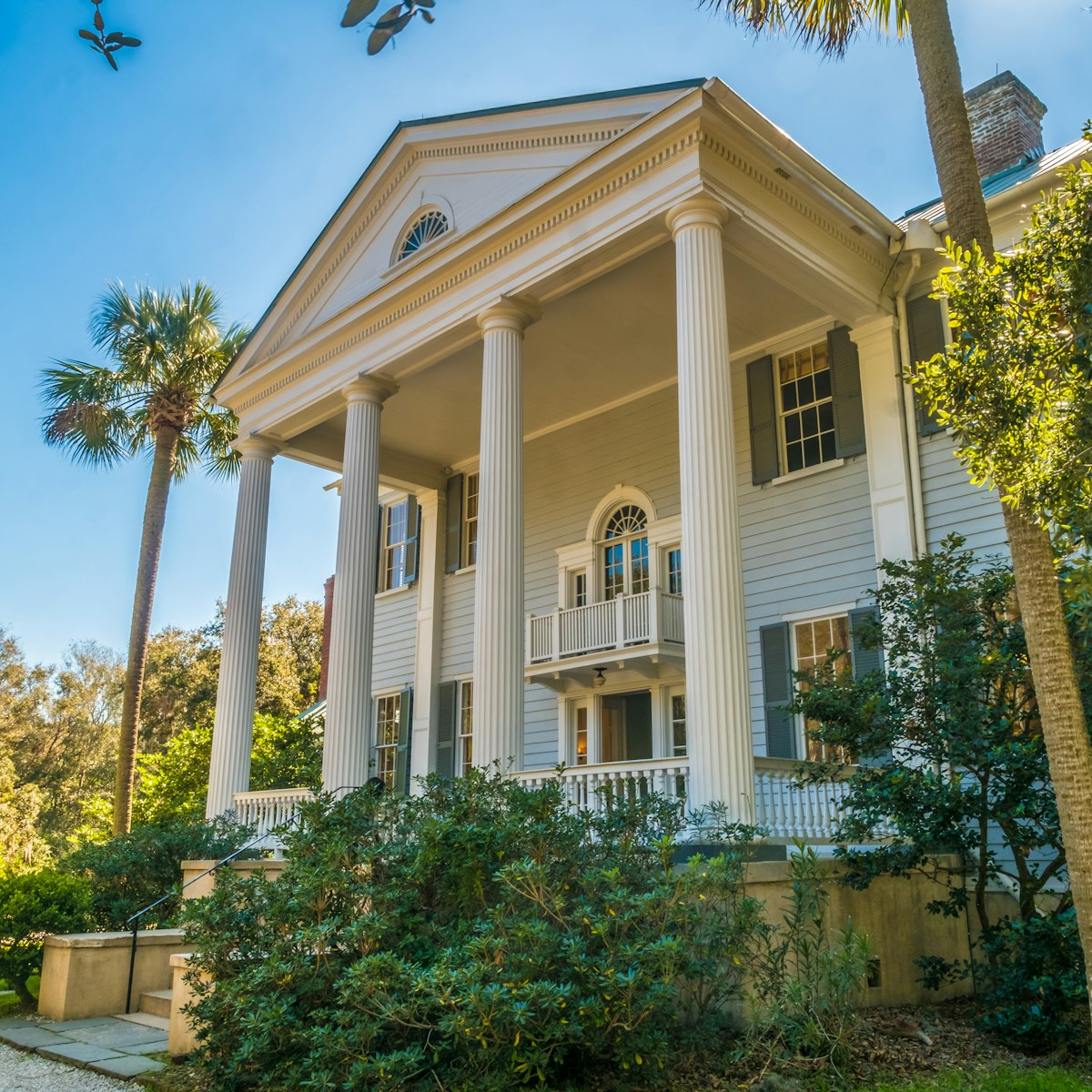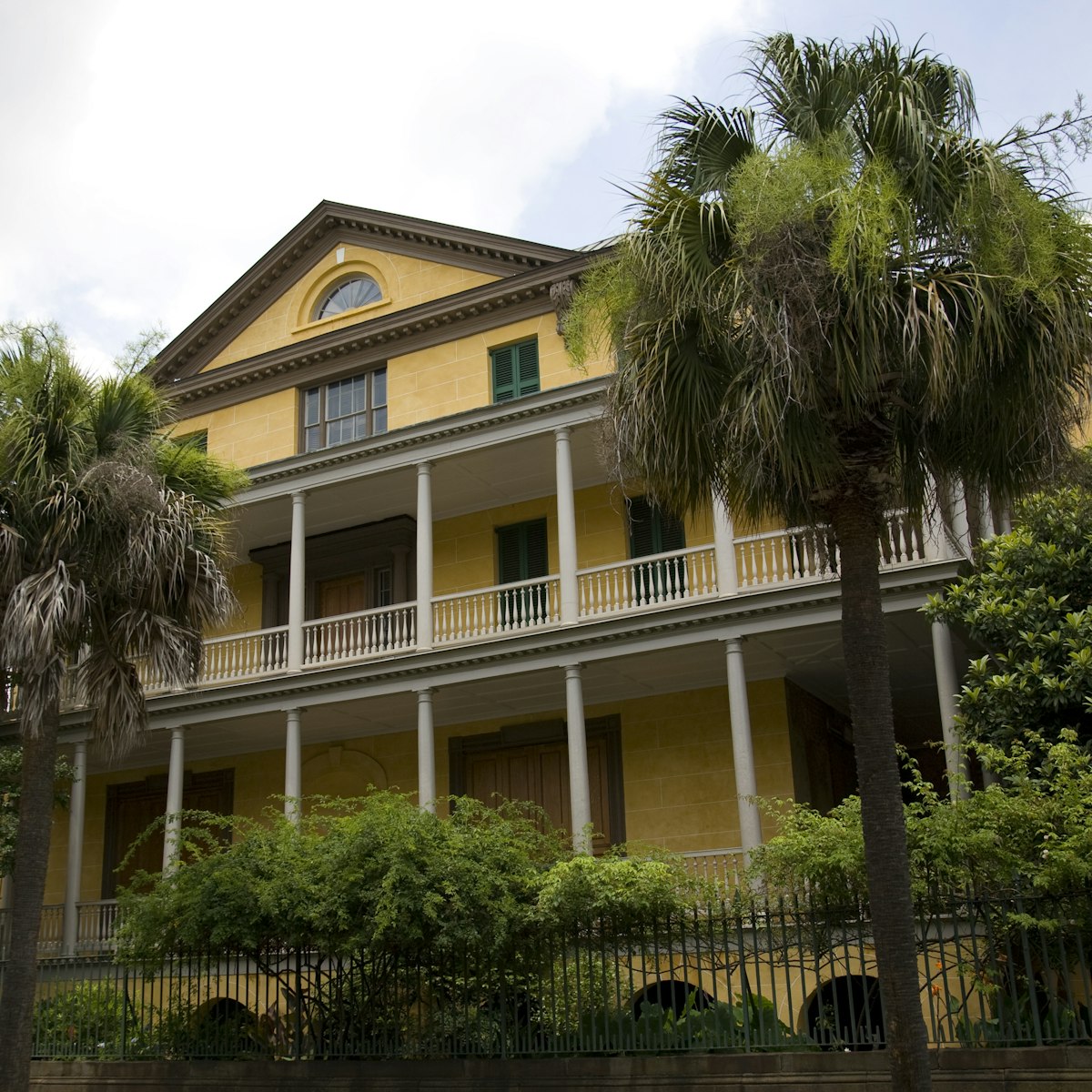With its 13 candy-colored houses, this stretch of Georgian row houses on lower E Bay St is one of the most photographed areas in Charleston. The structures date back to 1730, when they served as merchant stores on the wharf, a sketchy part of town at the time. Starting in the 1920s the buildings were restored and painted over in pastels. People dug it, and soon much of the rest of Charleston was getting a similar makeover.

Getty Images/iStockphoto
Lonely Planet's must-see attractions

2.81 MILES
Opened to the public in 2015, this James Island plantation offers an honest and frankly devastating account of the lives of the enslaved and later …

1.21 MILES
The only surviving urban town-house complex, this 1820 abode gives a fascinating glimpse into antebellum life on a 45-minute self-guided audio tour. The…

Guardians of Charleston Harbor
3.46 MILES
The first shots of the Civil War rang out at Fort Sumter, on a pentagon-shaped island in the harbor. A Confederate stronghold, this fort was shelled to…

11.77 MILES
This 500-acre plantation, which has been owned by the Drayton family since 1676, is a veritable theme park. Enjoy a tram tour, a petting zoo and a guided…

9.78 MILES
Some folks reckon this Southern live oak tree is 1500 years old (others says it's 400 to 500 years old). Whatever the case, it's one of the oldest living…

0.18 MILES
Formerly called Ryan's Mart, this building once housed an open-air market that auctioned African American men, women and children in the mid-1800s, the…

19.38 MILES
Part of Cape Romain National Wildlife Refuge, this pristine barrier island offers a haunting 'boneyard beach' (pines and myrtles poke out of the sand,…

4.19 MILES
This layered fort encapsulates the history of US coastal defense spanning nearly 200 years and four wars. Aspects of the fort have been restored to help…
Nearby Charleston attractions
1. Old Exchange & Provost Dungeon
0.11 MILES
Kids love the creepy dungeon, used as a prison for American patriots held by the British during the Revolutionary War. The cramped space sits beneath a…
0.11 MILES
As the name hints, this 1772 Georgian-style town house is kind of a big deal because George Washington rented it for a week, and visitors can stand in…
0.18 MILES
Formerly called Ryan's Mart, this building once housed an open-air market that auctioned African American men, women and children in the mid-1800s, the…
0.22 MILES
St Michael's is the oldest church in town, dating back to 1752, and its beloved bells have been announcing the time and various events, including…
0.22 MILES
A lovely, eight-acre park on the Cooper River, notable for its landscape architecture and eye-catching, pineapple-shaped fountain. During summer it's a…
0.24 MILES
A spectacular, self-supporting spiral staircase is the highlight at this 1808 Federal-style house, built by a Rhode Islander, known in Charleston as 'King…
0.24 MILES
In the yard of the Nathaniel Russell House sits a fine specimen of a super-Charlestonian porch furnishing – the joggling board. It consists of a 16ft…
0.26 MILES
Charles Edmondston built this Federal-style home in 1825 for a mere $25,000, and fell on hard times in 1837, forcing him to sell it to Charles Alston for …







